Can you actually rank category pages?
There’s a crazy rumor in SEO that Google doesn’t like to rank category pages. Nothing could be further from the truth. If you search, you’ll find 100s or 1000s of examples that prove the opposite.
What Google doesn’t like to rank are:
- “Thin” pages that offer little unique value
- Pages that are mostly duplicate of other, better pages
- Pages that don’t satisfy user intent
Consider this category page for low-carb recipes from Diet Doctor. Not only is it well-designed and super-useful, but it also outranks everything in its class. It rakes in over 600,000+ organic visits/month, according to Ahrefs.
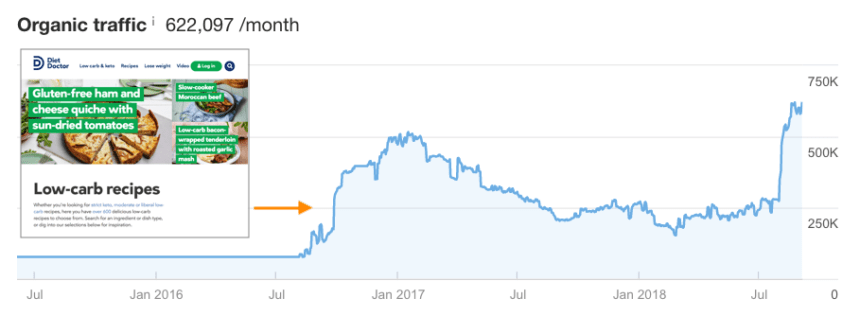
Category pages are a contradiction. On the one hand, they are everywhere, created automatically by popular blogging and e-commerce platforms. They are persistent in navigation and heavily linked to within your site architecture. On the other hand, authors, users, and search engines often ignore them.
With only a little effort, you can create category pages that actually stand out, rank, and successfully engage your audience.
Below, we’ll discuss the exact techniques to create category pages that are more useful, more likely to rank, and more likely to satisfy your users.
Turn Category Pages into Hub Pages
By default, a category page is merely a list of products or posts, with occasional links to subcategories.
Yawn. Our users are falling asleep already.
In comparison, a Hub Page acts as a central overview of a topic or category—linking to child categories and related products—while typically offering much more depth and utility.
Instead of simply listing products and posts, hub pages:
- Educates and answers more questions
- Link to useful resources
- Helps the user find exactly what they need
- Delights and engages
- Act as an “authority” on a given topic
Here’s the cool part: category pages make perfect candidates for hub pages. This is because category pages already focus on a specific theme/product/topic, and are often heavily linked to by your site’s existing internal architecture.
By making a few custom changes to your category pages, you can easily turn them into hub pages that serve as a more useful central authority for a topic. We’ll discuss how to do this below.
Elements of Effective Category Pages
A “standard” category page often contains the following and little else:
- A title, automatically generated
- A paginated list of products or posts
You can do better. Below, we’ve identified ten common elements of successful category pages. These elements work for both e-commerce and article/news sites alike.
While you typically don’t need to use all 10, successful category pages typically incorporate at least 4-7 of these elements.
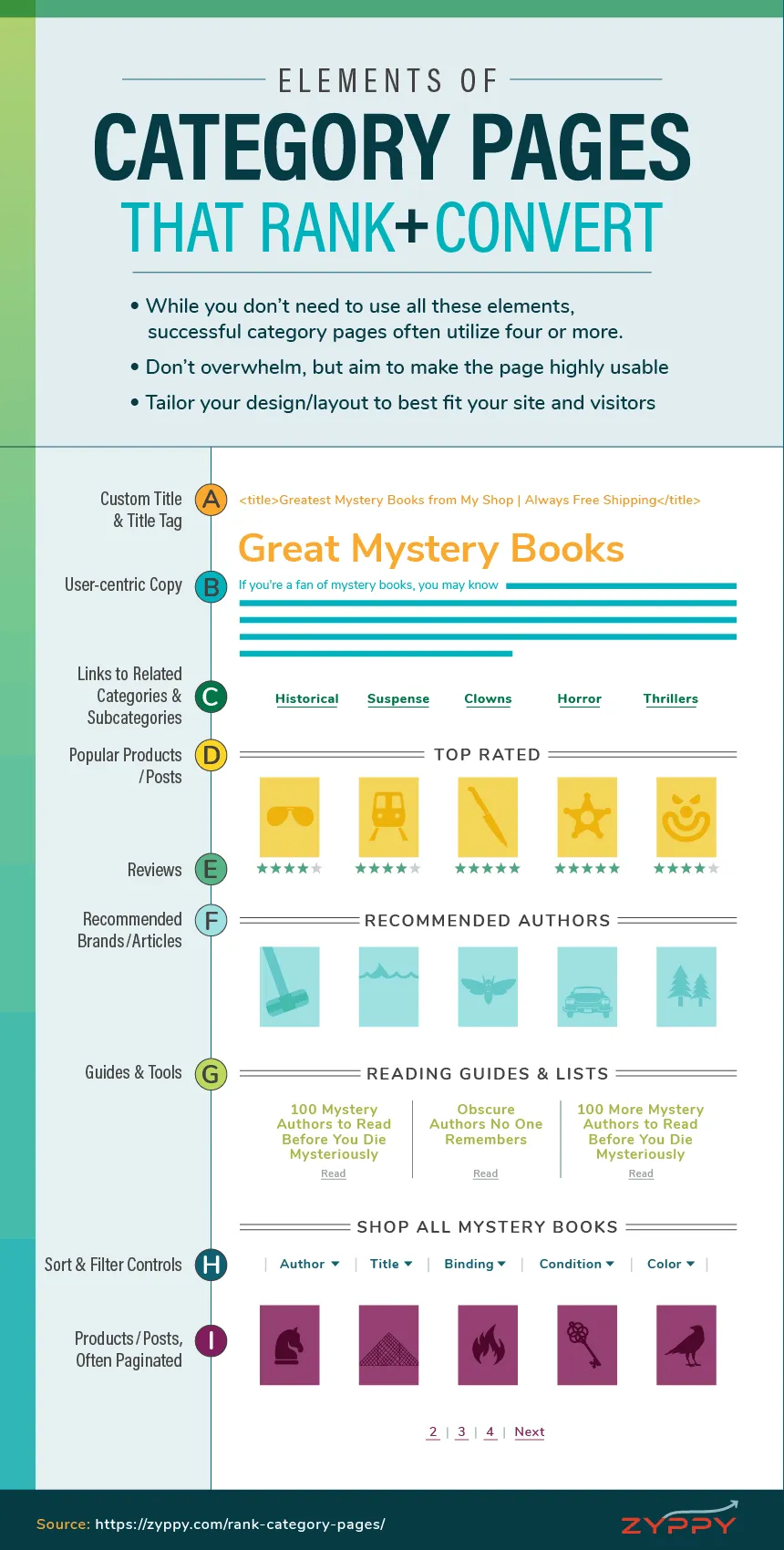
Ultimately, your goal is to make your category page simply more useful and engaging for any particular topic. As you do this, you also achieve the benefit of making your category more attractive as a target for external links.
1. Custom Title + Title Tag
A typical “naked” category title is simply the category’s name or tag. These are often auto-generated by your CMS using your category names. For example:
- Barcelona Hotels
- Bedding
- Travel Backpacks
By sprucing up your titles—and especially your title tags—you can add topical relevance and improve the click-through rate (CTR) of your pages in search.
Here are the same title tags from actual sites written for the categories above:
- THE 10 BEST Hotels in Barcelona (FROM $28) for 2018 – TripAdvisor
- Bed Sheets You’ll Love | Wayfair
- Travel Backpacks for Weekend and Work | Timbuk2
Use the same techniques that you would use for improving any title tag while keeping your title true to the page’s purpose.
A couple of my favorite resources for creating title tags:
- How to Craft the Perfect SEO Title Tag (Our 4-Step Process)
- 7 ‹Title Tag› Hacks for Increased Rankings + Traffic
2. User-centric Copy
Ditch the SEO text.
Often, people attempt to rank categories higher by adding “SEO text.” This means a few sentences or paragraphs of closely related terms and phrases. Typically, it’s filler copy that adds no real value to the page.
It’s true, adding descriptive text to a page can help it rank, but a better approach is adding user-centric copy.
User-centric copy goes beyond keywords and works to help, educate, and delight the reader.
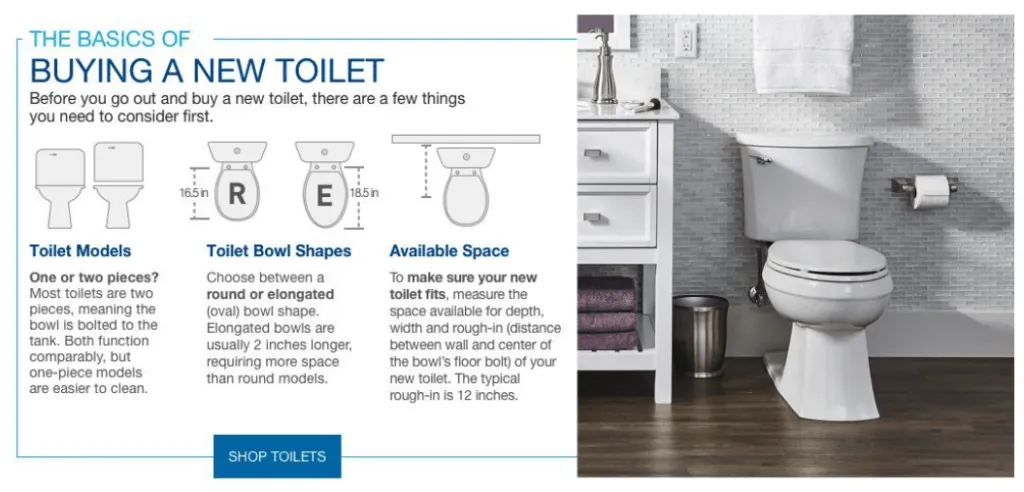
Rule of thumb for creating user-centric copy: answer the questions users want to know when researching your topic.
This means basic keyword and topic research as would be required for any other page – but sadly often gets overlooked when creating category pages.
Common places to research category topics include your Search Console data, People Also Ask queries, and competitor research. Check out Builtvisible’s excellent guide on improving category copy for more ideas.
3. Links to Related Categories & Subcategories
For hub pages, linking is where the magic happens.
The broader your category, the more subcategories you may have to link to. Linking between these subcategories helps build the topical relevance of your content silos.
Almost equally important: the opportunity to link to related categories. When sub-categories share the same parent in a silo, linking them together is part of a smart cross-linking strategy.
Ikea does this beautifully. Notice how the category “Living Room Storage” links not only down to child categories (Shelf Units, Book Cases) but across to related categories as well (TV and Media Storage, Sofas and Armchairs.)
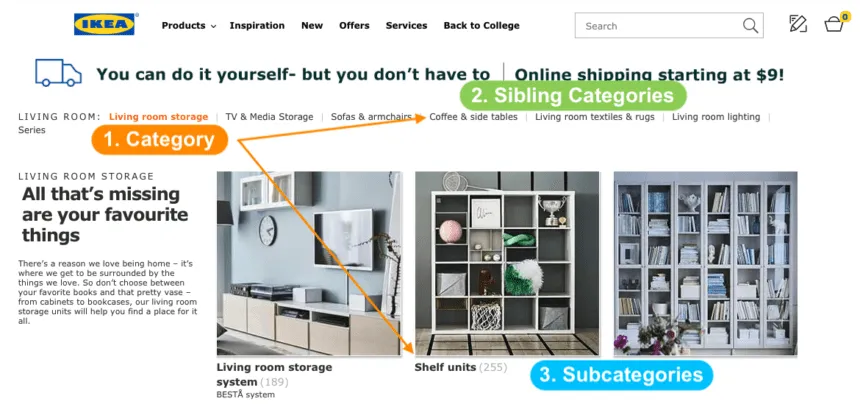
4. Popular Products & Posts
Often, users simply want to see your most popular or best-selling items quickly.
For products and posts with more competitive search volumes, a prominent direct link from a top-level category page can help these individual pages to rank higher.
Amazon is particularly good at this, listing best sellers on virtually every category and search page.
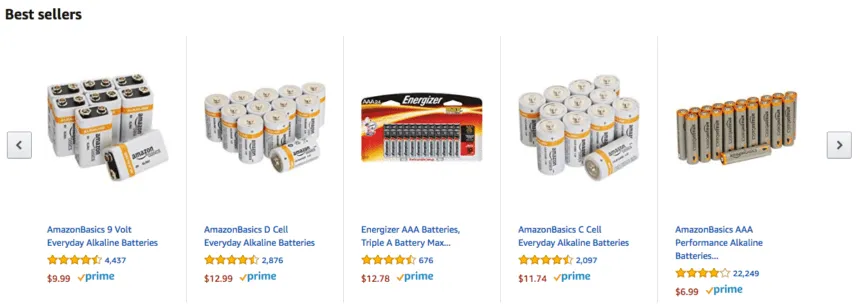
5. Recommended Brands / Authors
In addition to your most popular items, it’s helpful to link to your recommended brands, collections, or authors.
An added side benefit of grouping your products by brand—and linking to them from central category/hub pages—is that it can help you to rank for branded keyword searches, i.e., “Maytag washers” and “Gibson guitars.”

6. Reviews & Ratings
Reviews sell.
Category pages are a natural location to place product reviews. They also allow you to show off merchants or even yourself.
Check out this example from Sticker Mule, which lists customer reviews under each category and subcategory type. Brilliant.
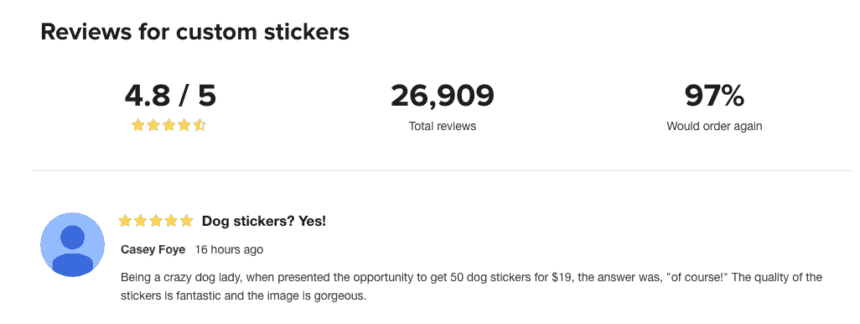
7. Guides & Tools
When shopping or gathering information, users often benefit from extra help in the form of guides and tools. Linking to these from your category/hub pages makes perfect sense.
Additionally, when you are struggling to build links to your category pages, a well-crafted guide or tool often makes excellent linkbait.
Check out this pool cleaner part guide from PoolZoom. It makes a complicated subject easy by showing you exactly what part you may need.
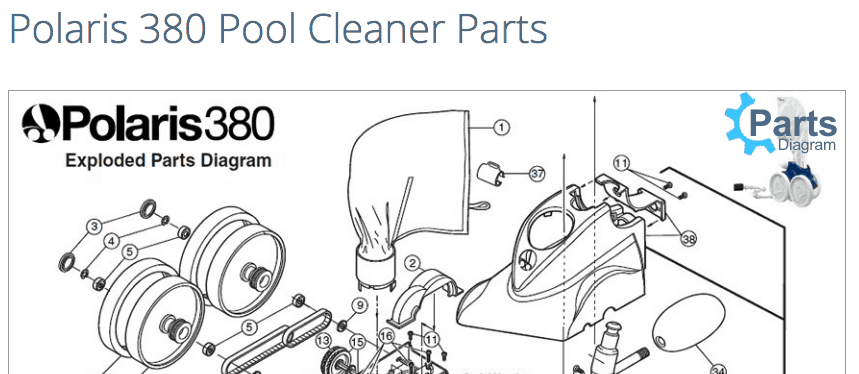
This bicycle light comparison tool from Tredz below demonstrates how well you can see with each light. While this technically isn’t a category page, it’s another idea executed brilliantly.
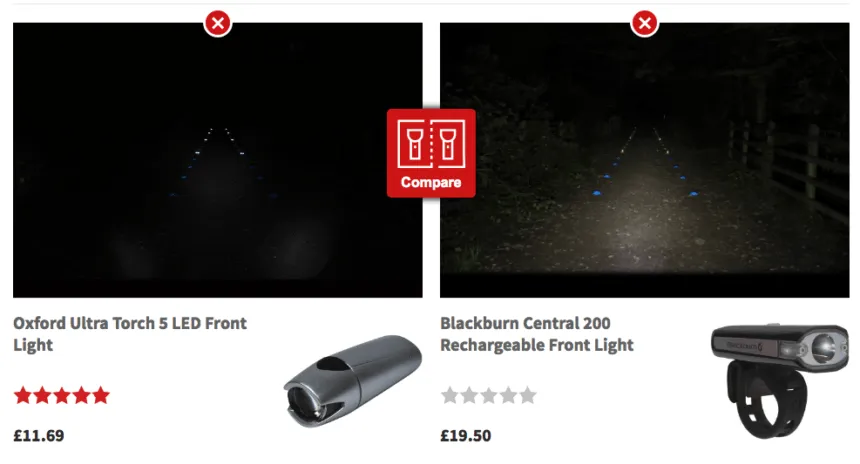
8. Sort & Filter Controls
Time to get creative!
Great category pages covering broad topics offer many ways to slice, dice, narrow, and sort.
Typically, the specific features that you allow users to sort and filter on are determined by your specific product. For example:
- Shoes: Gender, size, width, activity, price, color
- Televisions: Size, brand, resolution, price, type, rating
- Books: Genre, author, format, condition, rating, language
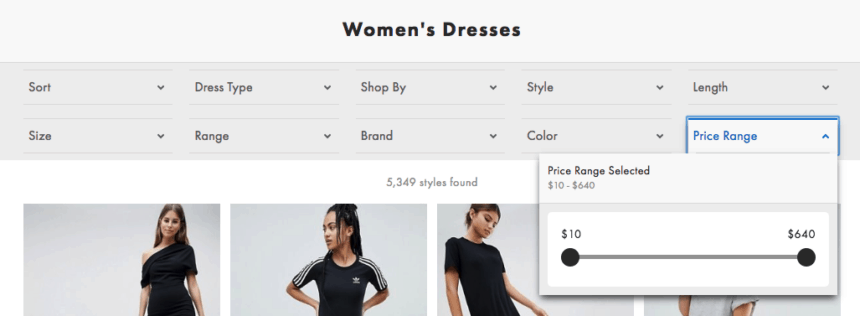
The result of these sort and filter options is faceted navigation. Because each option has the potential to create an entirely new URL (depending on how you set it up), faceted navigation must be carefully managed.
9. Products / Posts
Not all category pages list individual products (sometimes these are called Product Listing Pages, or PLPs.)
If a category is sufficiently broad, you may simply want to link to related subcategories and helpful resources. For example, neither these pages from L.L.Bean or REI feature long lists of products.
In other situations, you’ll often find “view all” options for products and posts directly on the category page itself.
Doing so can pass greater link equity to your individual product pages – helping them to rank. Or you may find that you drive more traffic/sales from your category and sub-category page, and decide to focus your link equity 100% in those locations instead.
Typically the decision is made by the number of listings. If you have 1000s of products/posts in a category, it may not make sense for your user to scroll through them all.
Only 100? Then it’s likely worth it to list them on the category page itself.
10. Links, Links, Links
Great content and terrific user experience alone typically aren’t enough to shoot your category pages to the top of Google.
Like any other page, you often need links.
Consider this On-page SEO category page from Moz below. It ranks #2 for “on-page SEO” and receives 1000s of organic visits per month.
This is a great example of a blog category ranking for competitive terms. You don’t need products to make a great category page.
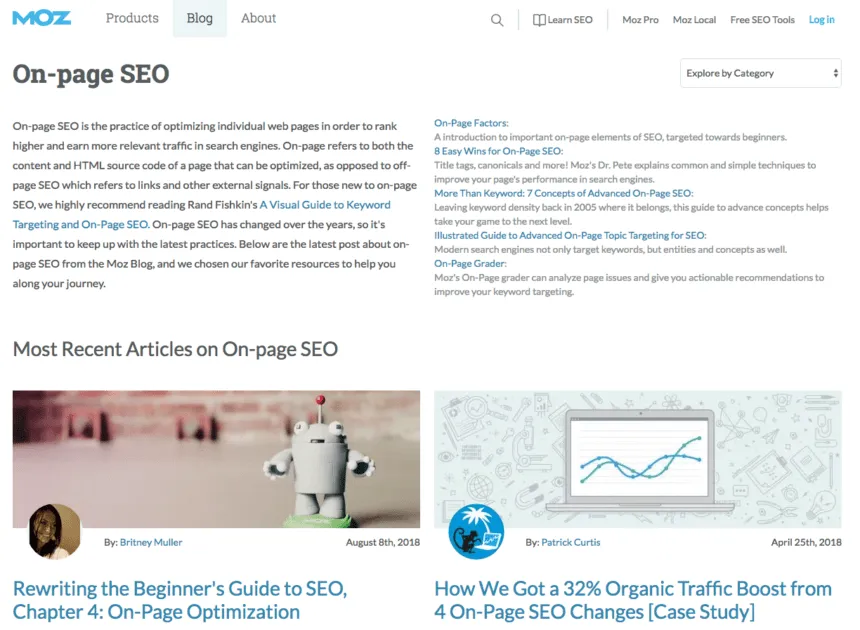
Notice how the page contains not only a list of most recent posts, but also user-centric text and links to related resources.
It also has earned a ton of external links. 209 linking root domains, to be exact, according to Link Explorer.

(This is actually small potatoes. Moz’s Whiteboard Friday category page has earned links from a whopping 1.4 thousand domains.)
External links help a ton, but you can also help yourself out by smart internal linking. Obvious places to link to your top category pages include:
- Your homepage
- Other categories
- Breadcrumbs
- Post/Product tags
- Navigation
- Within posts and articles
Very popular categories may be justified in your sitewide navigation. In other cases, linking to your categories from within posts and articles is perfectly fine – especially when it’s a helpful link.
Further Reading & Recommend Resources
If you want to explore how to make better category pages further, here are a few top resources:
- Why should you create more Product Listing Pages?
- The Ultimate Guide to e-Commerce Category Pages
- Intermediary Category Page – 203 design examples
- How to Easily Create Custom Category Pages in WordPress
- Category page link building for e-commerce sites. The good, the bad, and the ugly.
What are some of your favorite category pages and best practices? Let us know in the comments below.

